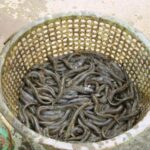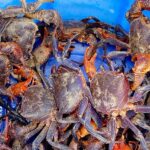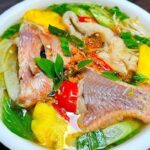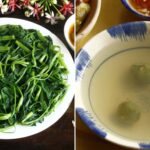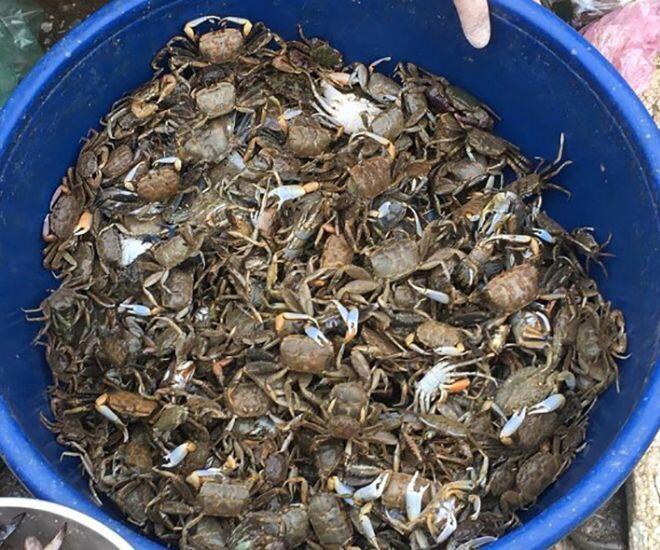
The mud crab, scientifically classified under the crustacean class and the crab family, bears a striking resemblance to freshwater crabs but thrives in marine and estuarine environments. These creatures are adept at burrowing into muddy banks to seek shelter and concealment. During low tide, they emerge onto the mudflats to forage for food and bask in the sun. Remarkably, even the slightest noise prompts them to retreat swiftly into their burrows.
Mud crabs possess a slender body, with legs adorned by numerous clinging hairs and sharp, yellow-tipped ends. Their claws are small and silvery-white. Unlike freshwater crabs, mud crabs boast firm, sweet, and richly flavored meat. This versatility allows them to be prepared in various dishes, including steamed, boiled, grilled, or sour soup, catering to diverse culinary preferences.
Mud crabs are most abundant from January to September in the lunar calendar. The most renowned location for mud crabs is the mudflats of Da Loc commune, Hau Loc district, Thanh Hoa province. This coastal area experiences frequent tidal changes, providing extensive mudflats rich in plankton—an ideal habitat for mud crabs to thrive, burrow, and reproduce.

Local residents note that from January, as temperatures rise, mud crabs become more active in reproduction and frequently emerge onto the mudflats. This marks the beginning of the crab hunting season, which lasts until the end of September in the lunar calendar. During this period, the mudflats of Da Loc are teeming with mud crabs scuttling across the mud, creating a unique spectacle rarely seen elsewhere.
To harvest mud crabs, locals wade through mud depths of 40–50 cm, following footprints on the mud to locate their burrows. Upon discovery, hunters must carefully reach deep into the burrow to extract the crabs. Some burrows may contain 3–4 crabs, but their quick reflexes make capture challenging.
In addition to manual hunting, local fishermen have innovated a method using a bamboo pole 1.5–2 meters long. The line is made of thin, bright-colored thread with multiple hooks attached. When crabs are spotted on the mudflats, the hunter remains still, then swiftly swings the pole to catch the crab, securing it in a basket. Notably, this method requires no bait, relying solely on observation and agility.
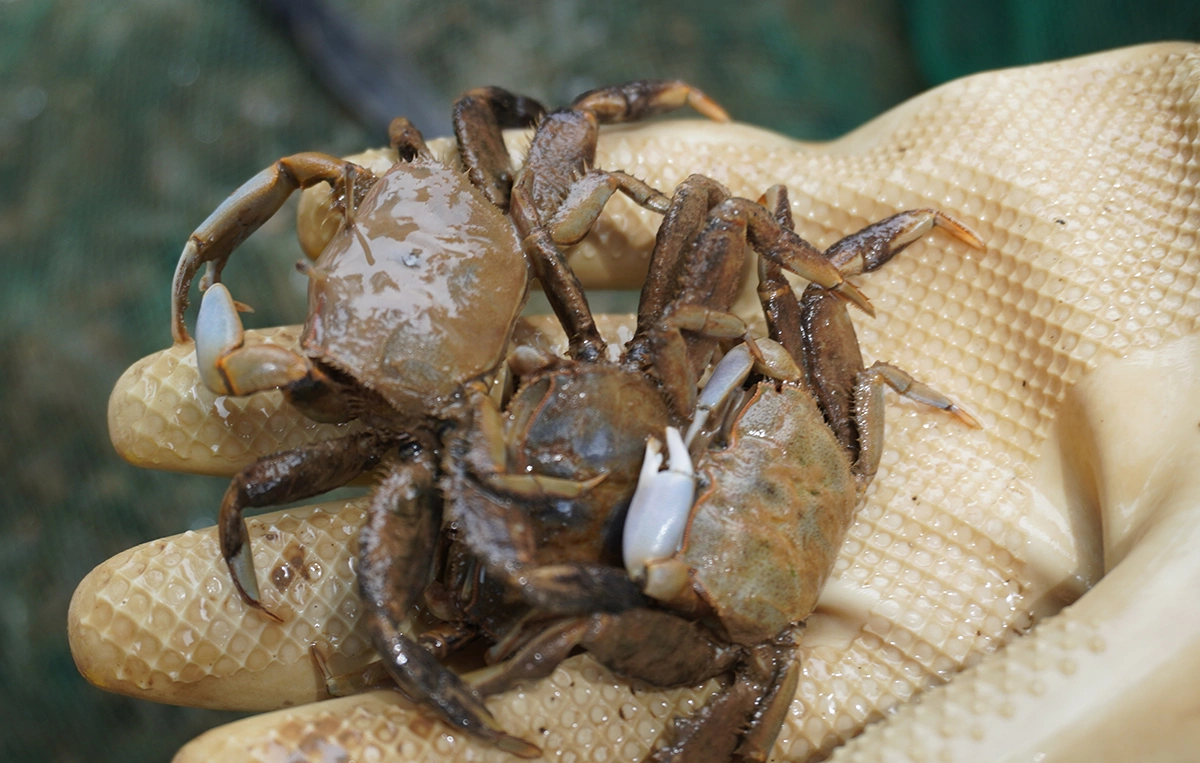
Experienced hunters can catch 6–8 kg of mud crabs daily during peak season. Previously, when demand was low, mud crabs were priced at only 30,000–40,000 VND/kg. Today, due to increased demand, especially from restaurants and urban consumers, prices range from 60,000–75,000 VND/kg, with occasional shortages leading to “sold-out” situations.
Mud crabs have long been a staple in the humble meals of Da Loc fishermen. Locals often prepare them simply by steaming, boiling, or grilling to preserve their natural flavor. However, the most distinctive dish is sour soup made with mud crabs and sour leaves.
To prepare this dish, mud crabs are thoroughly cleaned to remove mud, and their shells are separated to extract the roe. The crab meat and legs are minced, strained for broth, and the shells discarded. Almost the entire crab is used, except for the apron. The best soup is made with large crabs, whose shells have a pale yellow hue. When cooking, the roe is added last, simmered over low heat for 3–5 minutes, then sour leaves (vang vang leaves) are added. As mud crabs inhabit salty waters, minimal salt and a touch of seasoning suffice to create a delicately sweet broth with a distinct oceanic flavor.
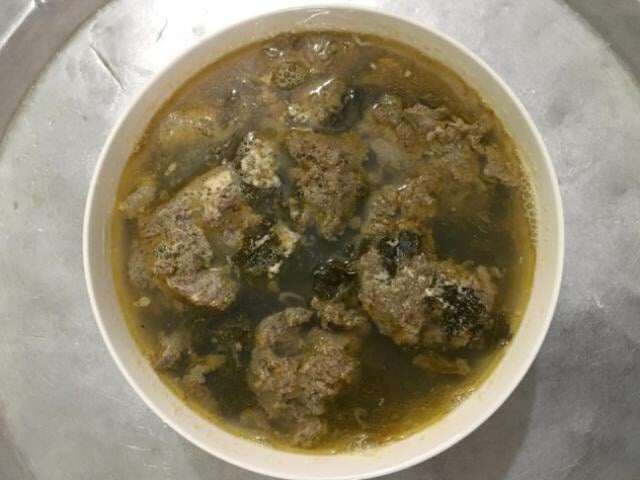
Sour soup with mud crabs and sour leaves offers a unique aroma, blending the rich sweetness of crab meat with the refreshing sourness of the leaves, creating a memorable rustic dish. For Da Loc residents, this soup is a familiar part of daily meals. For those who have left their homeland, merely mentioning this dish evokes nostalgic memories of childhood and their roots.
Once a mere “treat” for fishermen after arduous days at sea, mud crabs have now transcended the confines of fishing villages. In recent years, they have become a sought-after delicacy among discerning food enthusiasts, particularly in major cities. Several seafood restaurants have added mud crab dishes, such as steamed, grilled, or sour soup, to their menus to cater to customers.
Compared to freshwater crabs, mud crabs are considered more flavorful and nutritious. Their firm texture, rich sweetness, and buttery richness, with minimal fishiness, make them a “unique” delicacy. Many diners who have tried mud crabs describe them as both rustic and oceanic in flavor. Consequently, demand has surged, boosting their economic value for fishermen.
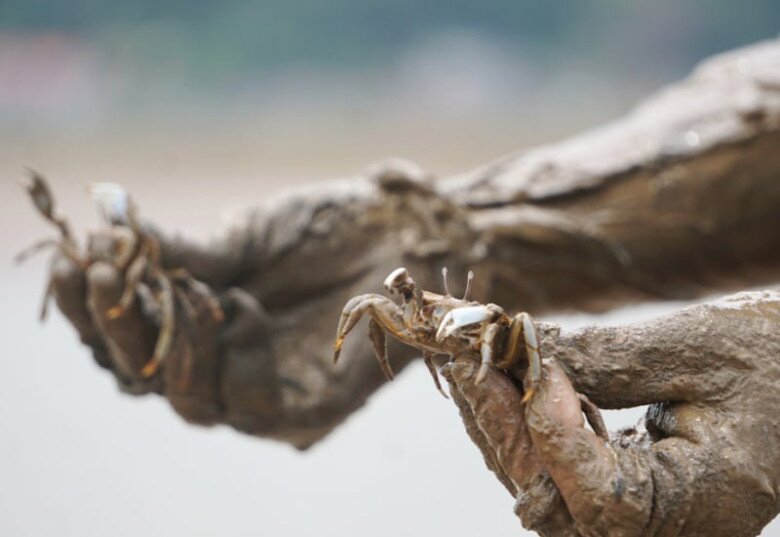
Mud crabs are now a significant source of income for Da Loc residents during the harvesting season. With an average daily catch of a few kilograms per household and current prices ranging from 60,000–75,000 VND/kg, mud crabs provide substantial profits. Traders purchase directly from fishermen, distributing them to wholesale markets, eateries, and restaurants.
However, mud crab hunting remains primarily a manual, experience-based profession, with limited modern tool support. This preserves its traditional charm but poses risks to supply as demand increases. With further research into breeding and cultivation, mud crabs could become a distinctive seafood specialty, contributing to Thanh Hoa’s marine economic development.
In the trend of tourism combined with regional cuisine, sustainably preserving and exploiting mud crabs, along with promoting sour soup and other dishes, could establish Da Loc – Hau Loc as a destination synonymous with this unique delicacy, “tastier than freshwater crabs,” as many diners have attested.

























